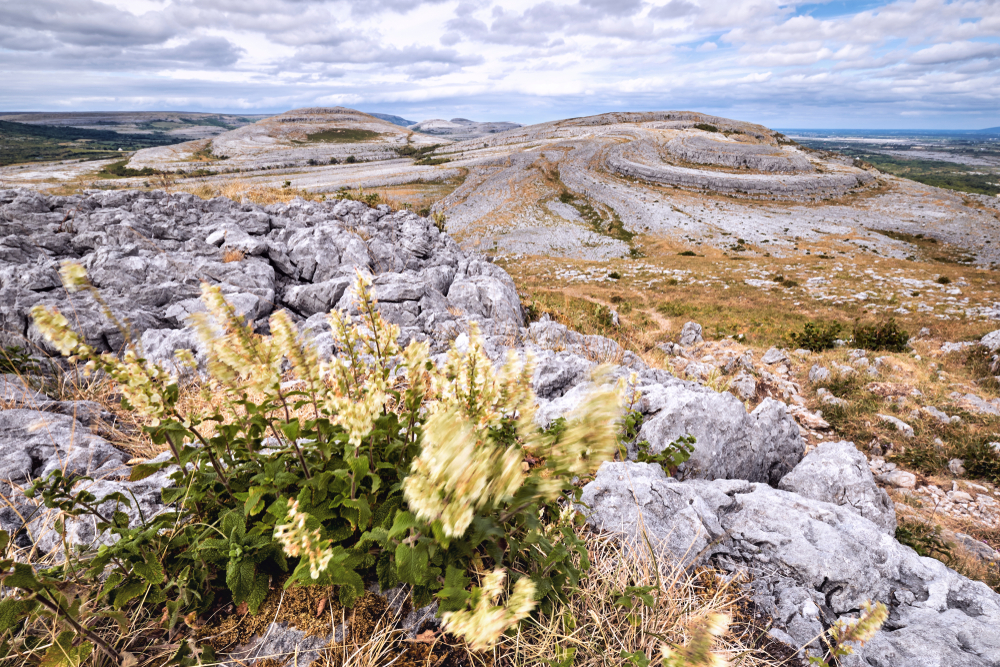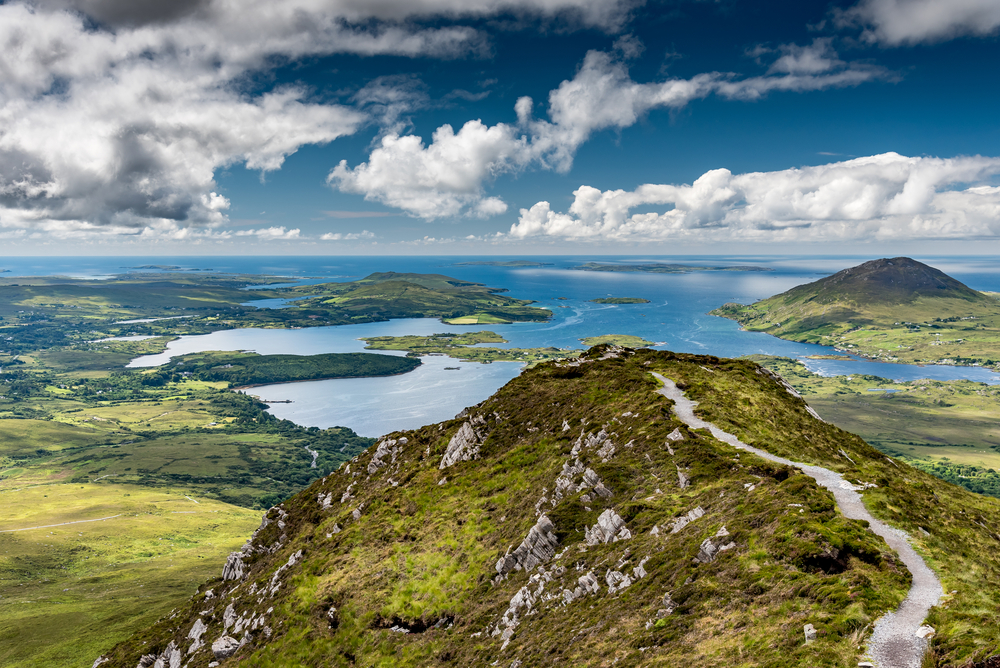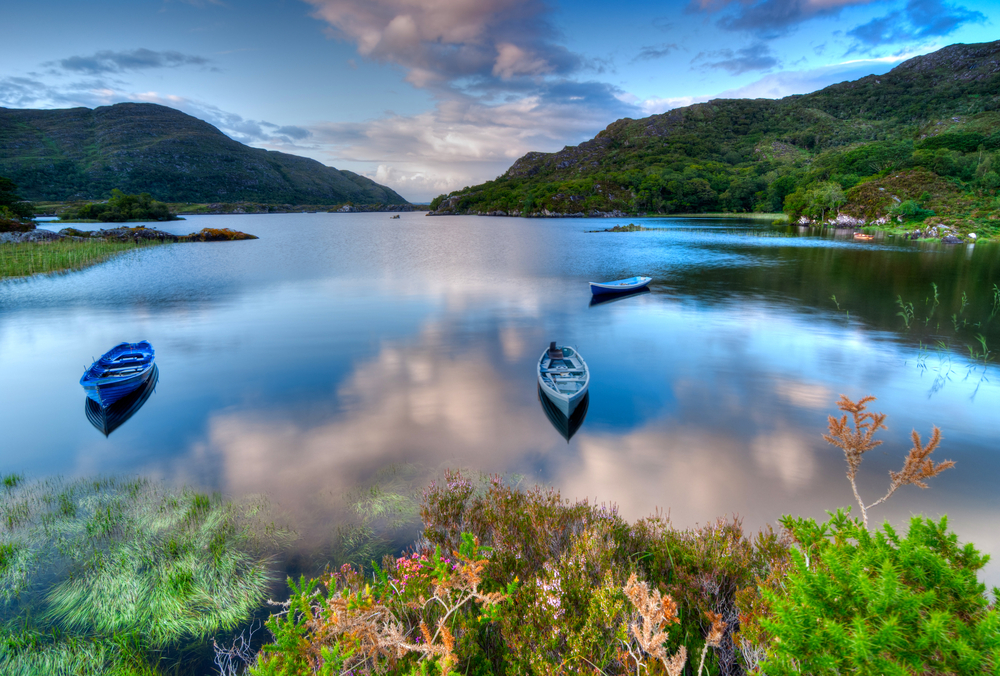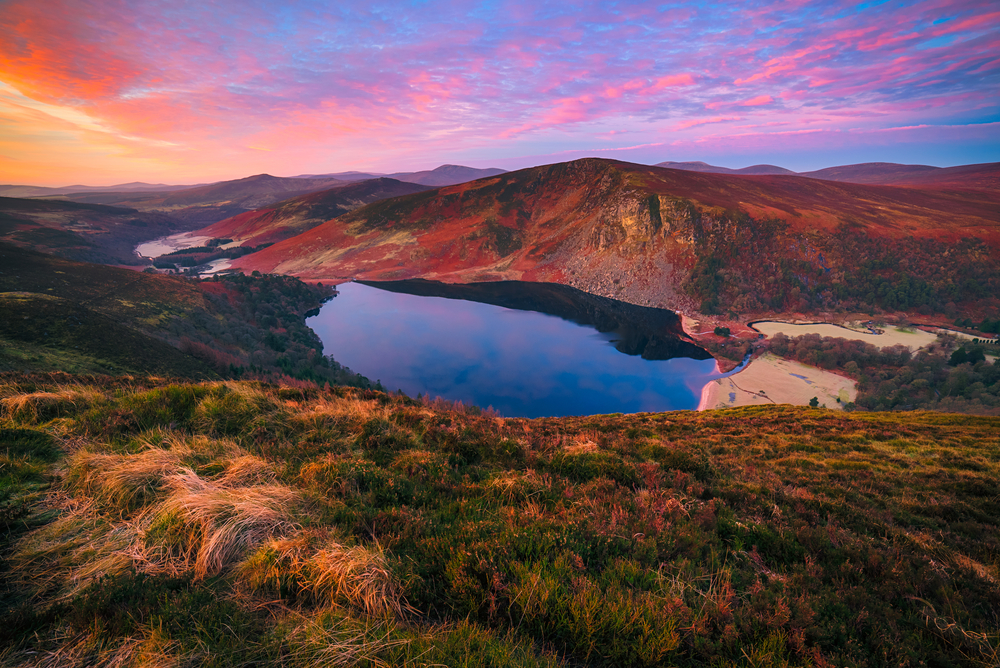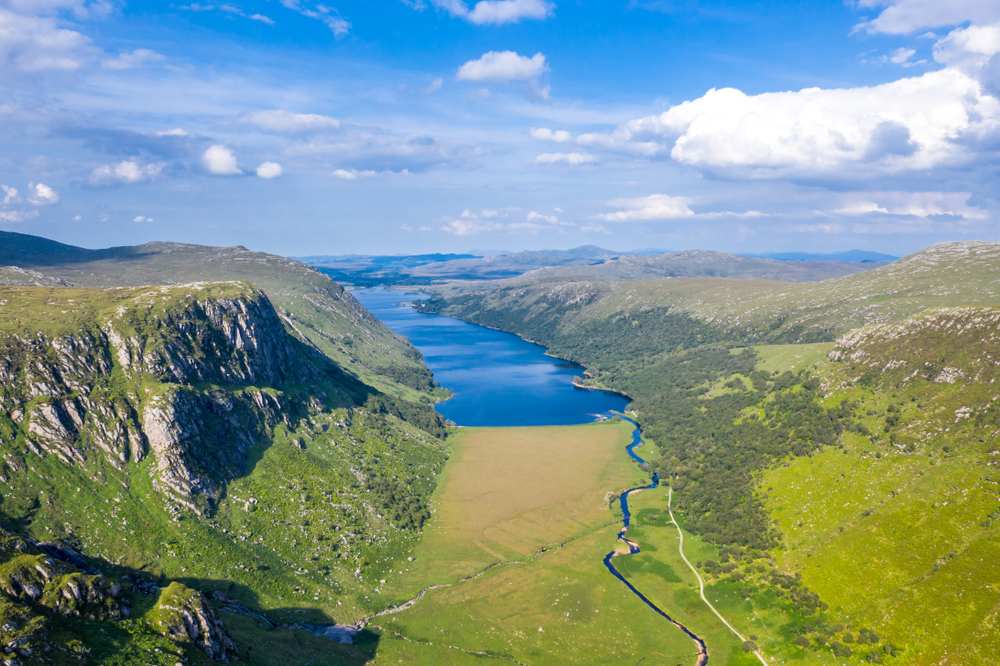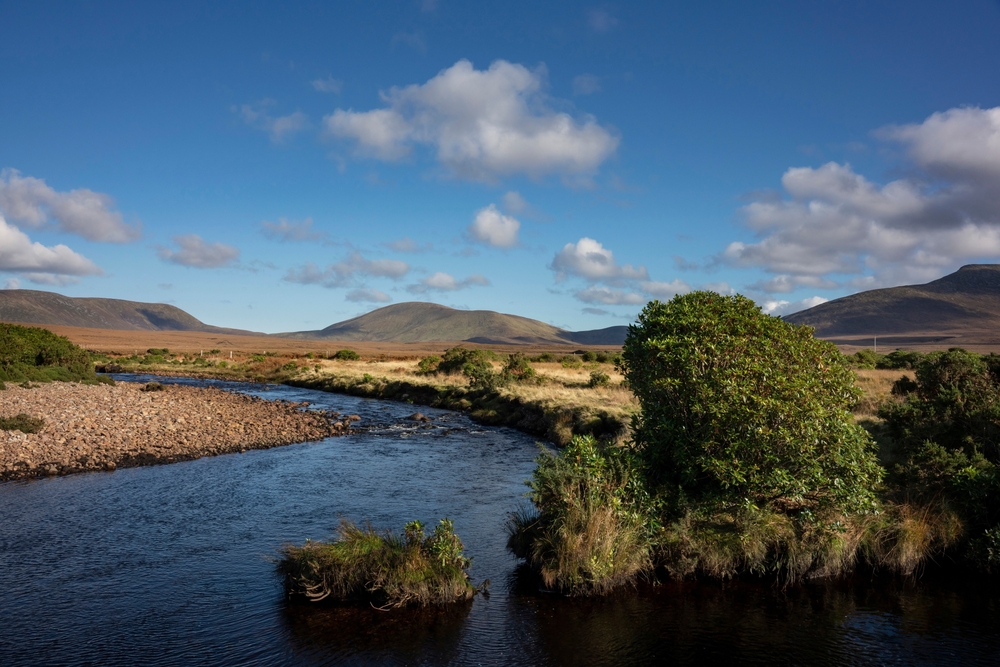Burren Overview
Burren National Park, or Boirinn in Irish, is a captivating gem located in County Clare, Ireland. Encompassing approximately 5.8 square miles (15 square kilometers), this park is renowned for its unique karst landscape, characterized by vast limestone pavements interspersed with fissures, known as grikes, and isolated rocks called clints.
This rugged terrain, shaped over millennia by glaciation, weathering, and erosion, creates a stark yet mesmerizing beauty that sets the Burren apart from other national parks. Its name, meaning “rocky place,” aptly describes the park’s striking landscape, which appears barren at first glance but reveals an extraordinary richness upon closer inspection.
The Burren’s terrain includes rolling hills, underground rivers, caves, and even small turloughs, or seasonal lakes, which are a hallmark of its unique hydrology. Some of the park’s most notable features include Mullaghmore Hill, a dramatic limestone formation with panoramic views of the surrounding landscape, and the Pollnagollum cave system, which extends beneath the rocky surface.
Vegetation in the park is a botanical marvel, as it supports a rare blend of Arctic, Mediterranean, and Alpine plant species coexisting in harmony. Visitors may encounter vivid displays of orchids, gentians, and ferns thriving in crevices, alongside mosses and lichens that cling to the limestone.
Wildlife in Burren National Park is as diverse as its vegetation. Mammals like badgers, foxes, and pine martens can often be spotted, while herds of feral goats add to the rustic charm. The park also serves as a vital habitat for a variety of bird species, including kestrels, skylarks, and peregrine falcons, which soar above the limestone expanse. The Burren is a haven for nature enthusiasts who relish the chance to witness this dynamic ecosystem.
Popular features of the park include its well-maintained walking trails, such as the Mullaghmore Loop, which offers breathtaking views of the limestone hills and wildflowers. The Burren is also celebrated for its archaeological heritage, boasting ancient stone structures like dolmens and ring forts, some of which date back over 5,000 years. These remnants of human history are seamlessly integrated into the natural environment, adding a layer of cultural intrigue to the park’s allure.
Visitors can engage with the Burren through hiking, guided tours, and birdwatching, immersing themselves in the park’s serene atmosphere. Conservation efforts in the Burren have been both challenging and rewarding, as its fragile ecosystem demands careful management to balance tourism with environmental preservation.
The BurrenLIFE project has been a particular success, promoting sustainable farming practices to maintain the delicate balance between the land’s natural and cultural heritage.








































































